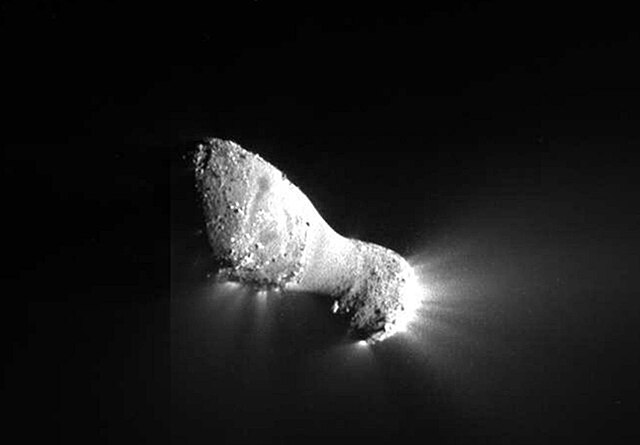1566 Icarus is a large near-Earth object of the Apollo group and the lowest numbered potentially hazardous asteroid. It has an extremely eccentric orbit (0.83) and measures approximately 1.4 km (0.87 mi) in diameter. In 1968, it became the first asteroid ever observed by radar. Its orbit brings it closer to the Sun than Mercury and further out than the orbit of Mars, which also makes it a Mercury-, Venus-, and Mars-crossing asteroid. This stony asteroid and relatively fast rotator with a period of 2.27 hours was discovered on 27 June 1949, by German astronomer Walter Baade at the Palomar Observatory in California. It was named after the mythological Icarus.
Radar image of Icarus taken by the Goldstone Observatory in June 2015
A near-Earth object (NEO) is any small Solar System body orbiting the Sun whose closest approach to the Sun (perihelion) is less than 1.3 times the Earth–Sun distance. This definition applies to the object's orbit around the Sun, rather than its current position, thus an object with such an orbit is considered an NEO even at times when it is far from making a close approach of Earth. If an NEO's orbit crosses the Earth's orbit, and the object is larger than 140 meters (460 ft) across, it is considered a potentially hazardous object (PHO). Most known PHOs and NEOs are asteroids, but about 0.35% are comets.
Image: Asteroid 2006DP14
Image: The VLT images the very faint Near Earth Object 2009 FD
Image: Comet Hartley 2
Radar image of (388188) 2006 DP14 recorded by a DSN antenna




